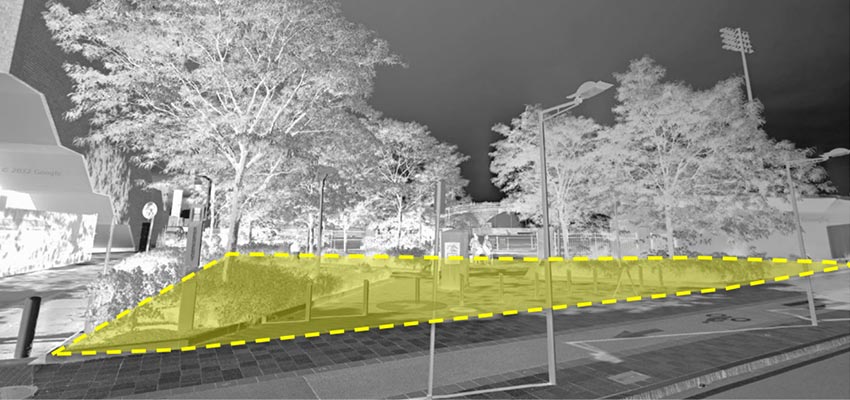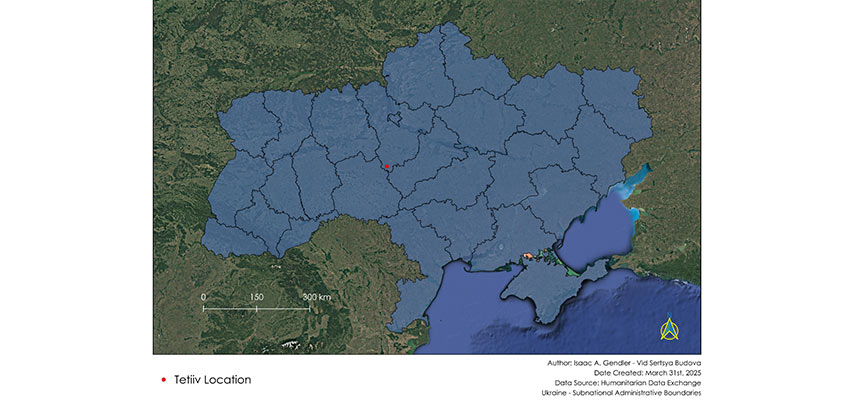
Thermal infrastructure planning for a 2,100-person resilient neighborhood in Tetiiv, Ukraine.
MIT D-Lab class
Thermal Energy Networks (EC.S06 / EC.S11) Spring 2025
Community partner
Vid Sertsya Budova, Viktor Riabokin
Country
Ukraine
Team
- Isaac Gendler, 2025: Isaac Gendler is a second-year Master of City Planning student at MIT DUSP.
- Ava Dijstelbloem, 2025: Ava Dijstelbloem is a 4th year mechanical engineering undergraduate student.
Problem framing
The Ukrainian municipality of Tetiiv is experiencing a migrant influx due to its (relatively) safe position from the Russian full-scale invasion. The municipality is now working with the Ukrainian NGO Vid Sertsya Budova to build a new neighborhood to accommodate incoming internally displaced people, refugees, and war veterans. The neighborhood will require thermal infrastructure that satisfies European Union requirements, given Ukraine’s ambition to join the economic bloc. This project performs a critical infrastructure study to help Tetiiv and Vid Sertsya Budova understand thermal setup is feasible and optimal.
Cultural context
Over half of Ukrainian households relied on natural-gas-based district heating systems for their heating infrastructure before the war. District heating transfers heat from centralized heat generation sources to residents using insulated pipes. The lion’s share of Ukraine’s district heating systems was built during the Soviet Union era and typically are owned/operated by a municipality. Tetiiv’s heat supply is partly centralized and partly individual heating. District heating is provided by Tetiivteplomerezha, a municipal enterprise of the Kyiv Regional Council, which serves the city's housing stock, budgetary institutions, and organizations. Ukraine’s district heating systems are vulnerable to Russian bombings due to their large, centralized nature.
Theory of change
MIT students can help Vid Sertsya Budova create the new neighborhood by studying the solar potential, heating needs, and designing a thermal energy network topology.
Proposed solution
Energy study
This study assesses the feasibility of rooftop solar energy in meeting the heating needs of the Tetiiv Eco Community in Ukraine, which includes single-family homes, row houses, and cohousing units. Using Rhino 3D models and LadyBug simulations in Grasshopper, the team evaluated solar irradiance and rooftop potential with Tetiiv’s climate data. We calculated monthly solar energy generation using irradiance, panel efficiency, and available roof area. The team estimated heating demand by calculating hourly heat loss using building geometry, material U-values, and outdoor temperatures. Heat pump energy use was determined by dividing heat loss by a seasonal Coefficient of Performance (COP).
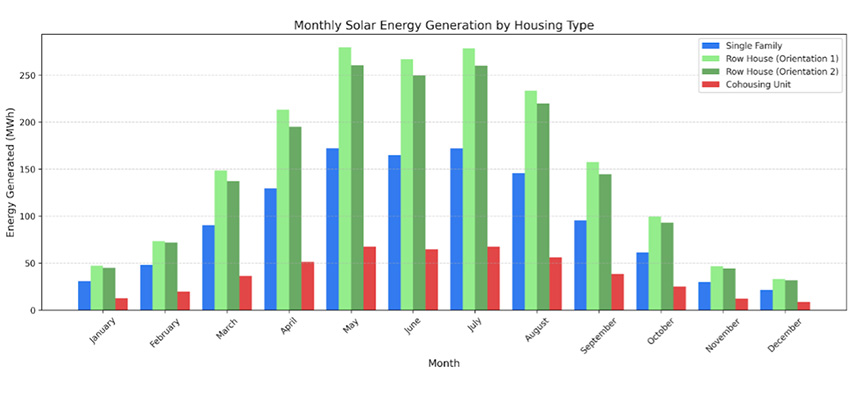
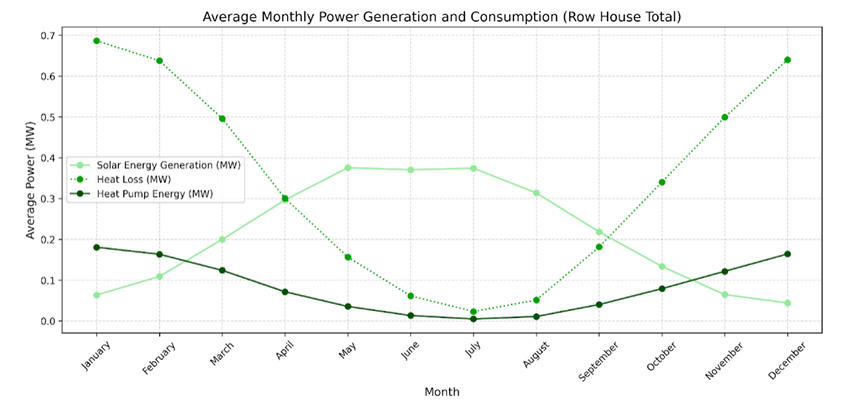
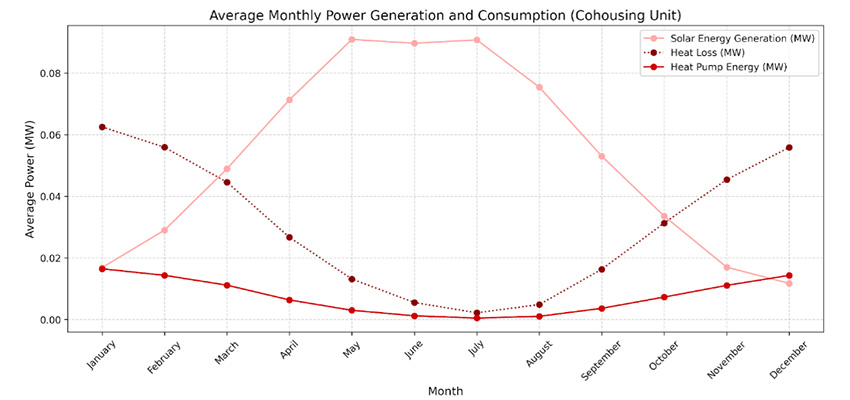
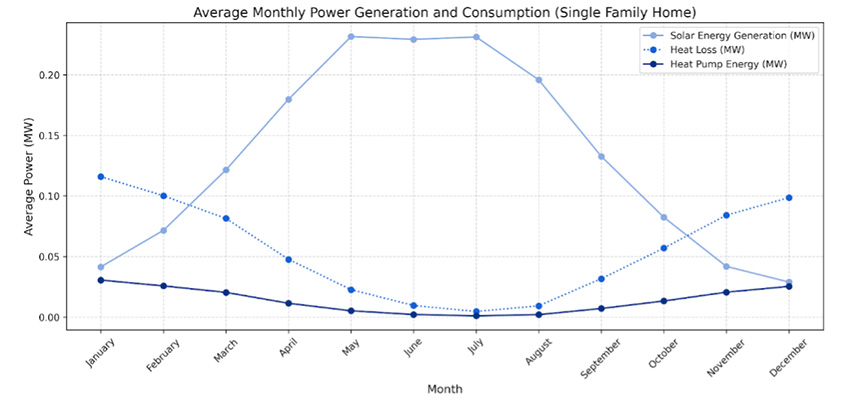
Thermal energy network
Findings from the energy study show that single-family homes can meet their heating demand year-round with rooftop solar alone. In contrast, row houses and the cohousing unit require supplemental energy in winter. The study proposes adding solar panels in community spaces and implementing a Thermal Energy Network (TEN) with seasonal storage. This includes vertical boreholes for ground-based heat storage, sewage heat recovery, and a closed-loop water circulation system connecting all buildings. By storing excess summer energy underground and retrieving it in winter, the system ensures year-round heating, maximizes renewable use, and reduces fossil fuel dependence—advancing sustainability and resilience within the community.
Contact
Susan Murcott, MIT D-Lab Lecturer


